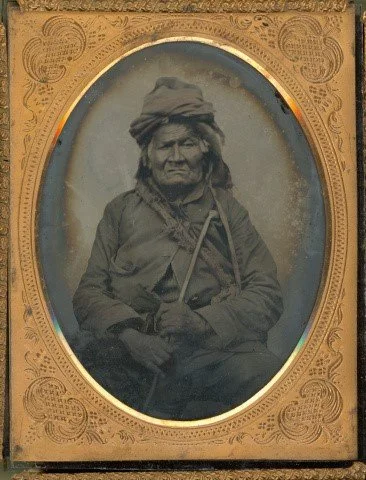Chief Okemos
Indigenous Leader ● 1769-1858
Courtesy of the Archives of Michigan.
Chief Okemos was born around 1769 at the Indian settlement, Ketchewandaugoning near Knaggs Crossing on the Shiawassee River. In 1811, he fought in the battle of Tippecanoe, Indiana. He then joined the British Forces with a colonel’s commission to fight in the War of 1812. In 1813, he was a leader at the Battle of Sandusky. Later that year he participated in the Siege of Meigs in Northwestern Ohio where he was severely injured. The 1813 Battle of the Thames was his last battle. He was captured and pardoned by Territorial Governor Lewis Cass. In the spring of 1814, he and some other chiefs presented themselves at Fort Wayne, Detroit, Michigan, where he stated that he was done fighting with the white man.
Okemos was signatory to the Treaty with the Wyandot, 1815, 1817; Treaty with the Chippewa of 1819, and Treaty with the Chippewa of 1837. On these treaties there were several spellings of his name: Okemans, Ogimaus, Okemos, O-ge-mah, and O-Gee-Manse. Okemos was a Saginaw Chippewa chief of his people.
Okemos married Waindegoquanyzance sometime before 1818. They had four sons Paymechewaysawdu, Waygeshegome, Jim Jackson, and James Okemos, and two daughters Kawbaishcawmoquay and Shawusquahbenoquay. Okemos died December 5, 1858, five miles northeast of DeWitt by the Looking Glass River. His body rests at Shimnicon on the Grand River near Portland, Michigan.



